Asian Americanand Pacific IslandersHeritage Month
By the Culture Circle Team at BAM:Tiana Howell, Architectural Designer at BAM Creative, New York,Cindy Liu, Interior Design Job Captain, Los Angeles, CA,Sadie Meyer, Architectural Designer, Los Angeles, CA,Morgan Summer, Architectural Designer, Los Angeles, CA
During this Asian American and Pacific Islanders Heritage Month, BAM celebrates the creatives that inspire us. BAM Creative stands with the Asian and Pacific Islander community in fighting against racism, injustice, and anti-Asian hate crimes.
During this Asian American and Pacific Islanders Heritage Month, BAM celebrates the creatives that inspire us. BAM Creative stands with the Asian and Pacific Islander community in fighting against racism, injustice, and anti-Asian hate crimes.

Willow Lung-Amam is an associate professor in the Urban Studies and Planning Program and director of community development at the National Center for Smart Growth Research and Education at the University of Maryland, College Park.
Lung-Amam’s research focuses on the link between social inequality and the built environment, particularly in neighborhoods undergoing rapid racial and economic change. She has written extensively on immigration, suburban diversity and poverty, gentrification, redevelopment politics, and geographies of opportunity, including her book Trespassers?: Asian Americans and the Battle for Suburbia.
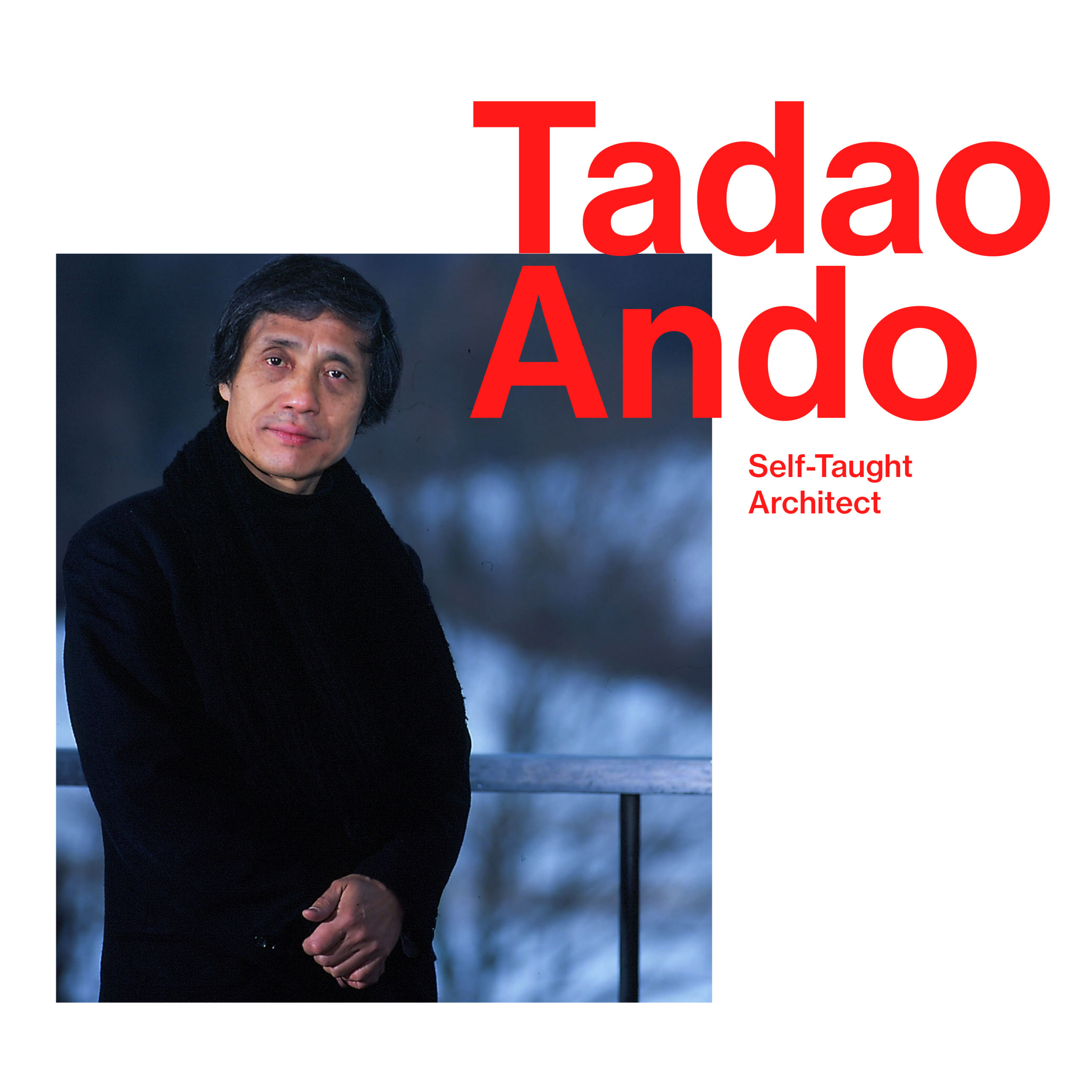
Tadao Ando is a Japanese self-taught architect…Tadao Ando’s body of work is known for the creative use of natural light and for structures that follow natural forms of the landscape, rather than disturbing the landscape by making it conform to the constructed space of a building. Ando’s buildings are often characterized by complex three-dimensional circulation paths. These paths weave in between interior and exterior spaces formed both inside large-scale geometric shapes and in the spaces between them.

Ambrish Arora is the design principal at Studio Lotus, a multi-disciplinary design practice based in Delhi.” The “studio’s work is grounded in principles of conscious design, celebrating local resources, cultural influences, attention to detail and an inclusive design process. Arora has a keen interest in promoting inclusivity and consciousness as a way of working in the design industry.
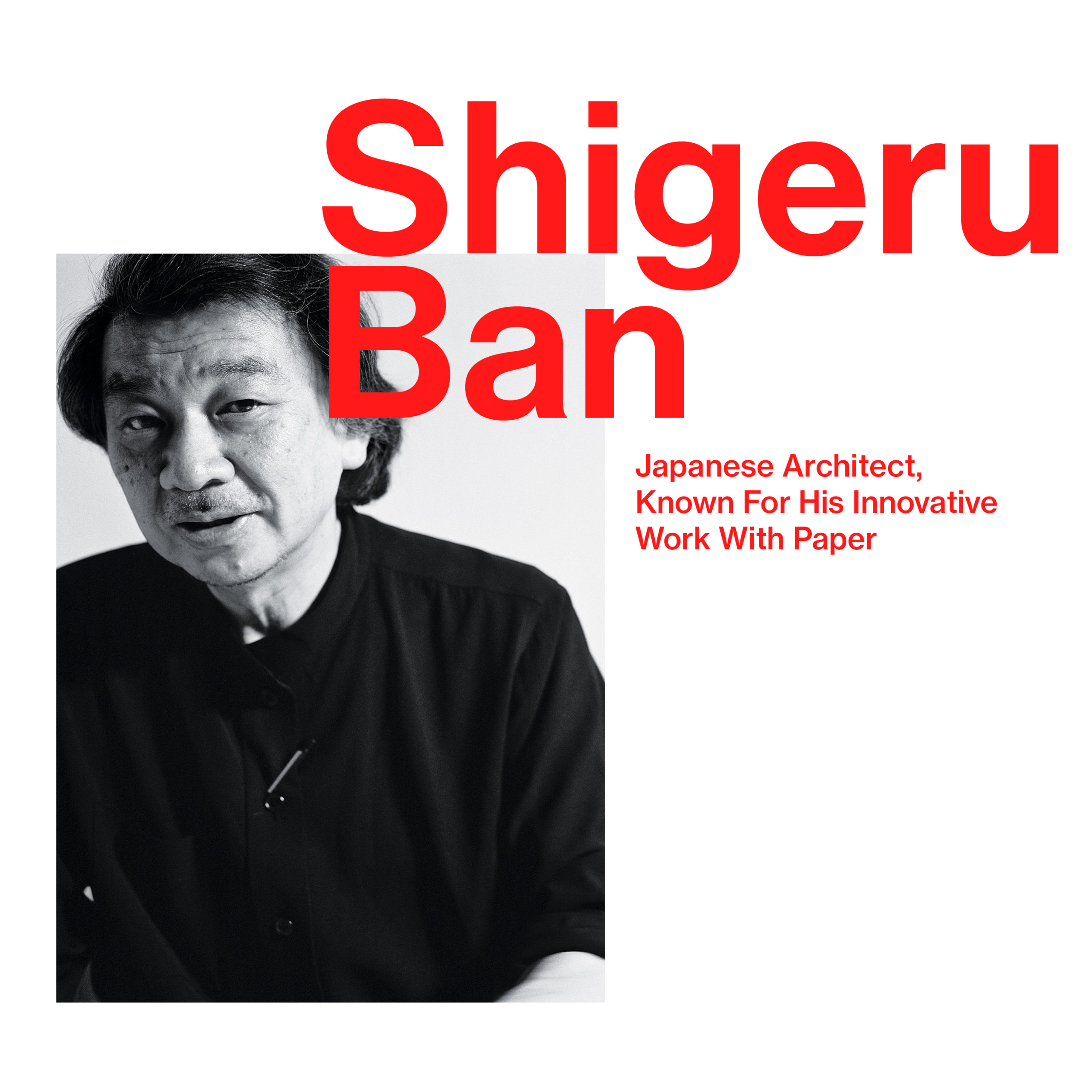
Shigeru Ban is a Japanese architect, known for his innovative work with paper, particularly recycled cardboard tubes used to quickly and efficiently house disaster victims. He was profiled by Time magazine in their projection of 21st-century innovators in the field of architecture and design…For Ban, one of the most important themes in his work is the ‘invisible structure.’ That is, he does not overly express his structural elements, but rather chooses to incorporate them into the design. Ban is not interested in the newest materials and techniques, but rather the expression of the concept behind his building. He deliberately chooses materials to further this expression.

Liu Bolin is a Chinese performance artist and photographer known for using chameleon-like methods to immerse himself in environments, earning him the nickname ‘The Invisible Man.’ The artist’s Hiding in the City series camouflages Liu by way of paint, a ‘silent protest’ aimed at the Chinese government’s policies in the years since the Cultural Revolution. ‘Disappearing is not the main point of my work,’ Liu has said. ‘It’s just the method I use to pass on a message. It’s my way to convey all the anxiety I feel for human beings.’ Born on January 7, 1973 in Shandong, China, he received his MFA from the Central Academy of Fine Arts, Beijing in 2001. In 2015, Liu was selected by the Global Goals campaign to produce an image that conveyed a number goals, including ending poverty and encouraging sustainable use of resources, Liu’s chose an image in where he hid himself within 193 flags of the world. The artist has been the subject of many solo exhibitions including those at Galerie Paris-Beijing in Paris, Klein Sun Gallery in New York, and Boxart in Verona, Italy, among others. He currently lives and works in Beijing, China.
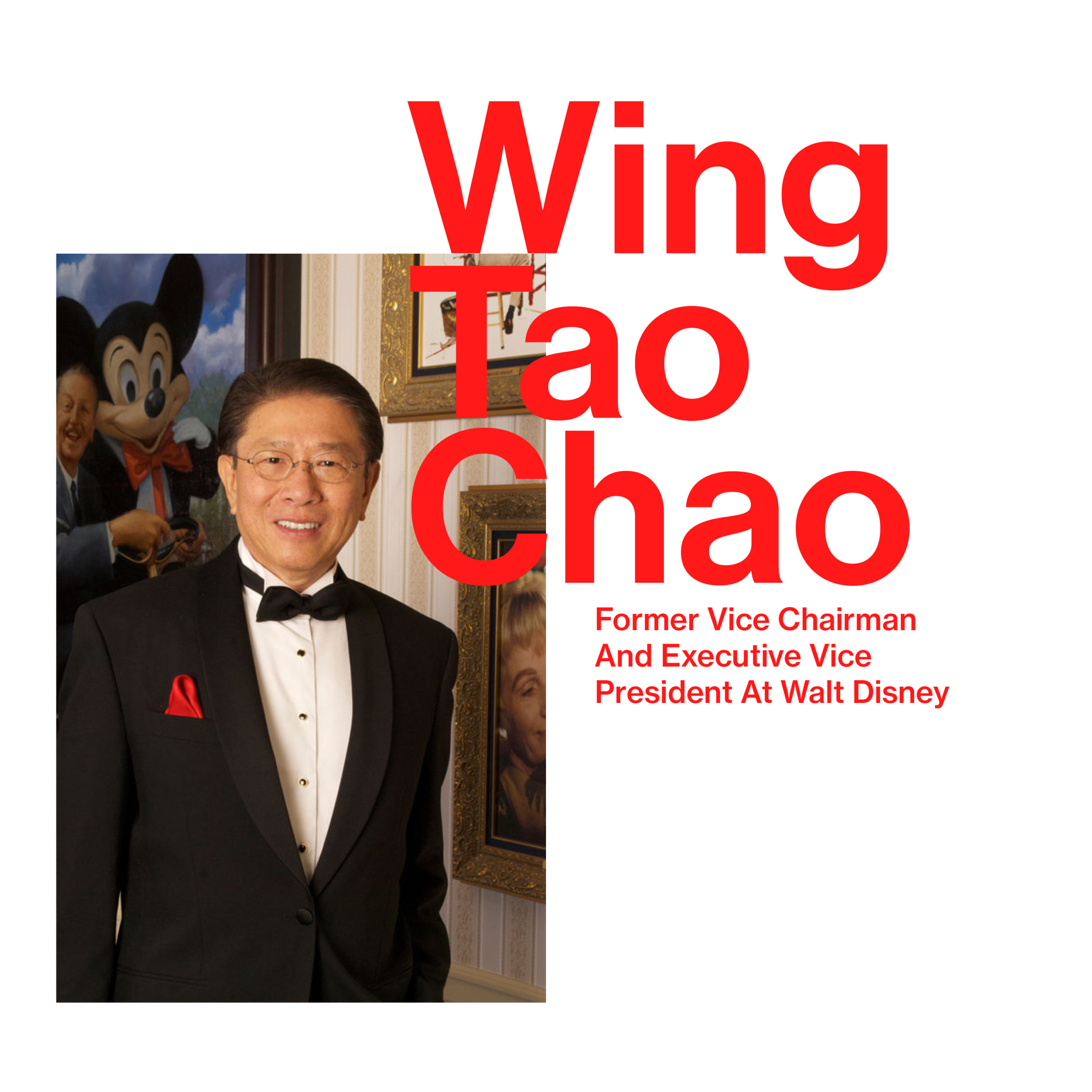
For 37 years at Disney, Wing T. Chao played a vital role in designing and developing exceptional and inspiring projects, worth more than $12 billion, at Disney Parks and Resorts worldwide. Wing served as Vice Chairman of Walt Disney Parks and Resorts for Asia Pacific Development, as well as Executive Vice President of Walt Disney Imagineering, where he oversaw master planning, architecture, and design for Disney properties around the world, including in California, Florida, Hawai‘i, Tokyo, Paris, Hong Kong, and Shanghai.
After Wing graduated with Bachelor and Master’s degrees from UC Berkeley, he went on to receive his second Master’s degree in Architecture with a focus in Urban Design from Harvard University. His thesis, “A Free Time City,” foreshadowed society’s transformation into the Information Age, conceiving a “Vacation City” where people could not only have fun, but also undergo educational enrichment. The idea of combining education and entertainment (“edutainment”) coincided nicely with Walt Disney World’s development plans for what would become the largest “Free Time City” in the world…Disney’s innovative design paradigm incorporated distinct architectural themes and characters for each hotel, resulting in the creation of “Entertainment Architecture.” Wing was the mastermind for planning and the design conscience for architecture, interiors, graphics, landscaping, lighting, and Cast Member costumes.

Soomeen Hahm is the founder of the SoomeenHahm Design Ltd, a design researcher, educator and architectural designer. Academically she is currently a design faculty and robotic researcher at the Southern California Institute of Architecture (SCI-Arc). Soomeen gained her Bachelor of Architecture degree at the Beijing Tsinghua University and her Master of Architecture degree at the Architectural Association where she studied in the Design Research Lab (DRL). After her graduation, she developed her interests focusing on research in generative and algorithmic design using computer coding, application of multi-agent systems in design, interactive/responsive environments, behavioral patterns of natural systems, as well as robotic fabrication processes and digital modes of production. Her latest research focuses on AR/VR, wearable machines and human computer interaction.
She is specialized in coding, digital simulations and 3d modelling in various software platforms. Since her graduation, Soomeen has taught and lectured at numerous institutions in UK and internationally, teaching studios, workshops and short courses focusing on computational design. In addition to this, she is contributing to various online educational platforms and digital toolset libraries…She is also an experienced designer [who] worked [for] several years at Zaha Hadid Architects and Zaha Hadid Design where she engaged in designing some of the most iconic buildings and products.

Alvin Huang, AIA is the Founder and Design Principal of Synthesis Design + Architecture and an Associate Professor at the USC School of Architecture. He is an award-winning Chinese-American architect, designer, and educator specializing in the integrated application of material performance, emergent design technologies and digital fabrication in contemporary architectural practice. His work spans all scales ranging from hi-rise towers and mixed-use developments to temporary pavilions and bespoke furnishings.

Fuzlar R. Khan was a Bangladeshi-American structural engineer and architect, who initiated important structural systems for skyscrapers. Considered the ‘father of tubular designs’ for high-rises, Khan was also a pioneer in computer-aided design (CAD). He was the designer of the Sears Tower, since renamed Willis Tower, the tallest building in the world from 1973 until 1998 and the 100-story John Hancock Center.
A partner in the firm Skidmore, Owings & Merrill in Chicago, Khan, more than any other individual, ushered in a renaissance in skyscraper construction during the second half of the 20th century. He has been called the ‘Einstein of structural engineering’ and the ‘Greatest Structural Engineer of the 20th Century’ for his innovative use of structural systems that remain fundamental to modern skyscraper design and construction.

Kisho Kurokawa was one of Japan‘s leading architects of the 20th century, perhaps most well-known as one of the founders of the Metabolist movement of the 1960s. Throughout the course of his career, Kurokawa advocated a philosophical approach to understanding architecture that was manifest in his completed projects throughout his life.
After completing his studies at the university of Tokyo under Japanese master Kenzo Tange in 1959, Kurokawa helped to establish the Metabolist movement, a loosely-affiliated group including Kiyonori Kikutake and Fumihiko Maki, with Tange himself connected to the group as both a member and a mentor. The principles of the Metabolists revolved around ideas of impermanence and change, and as the name suggests the movement was intended to have more in common with natural processes. These ideas were developed to be an elaboration of—and also a reaction to—the principles of the architects affiliated with CIAM, which had its final meeting in 1959.
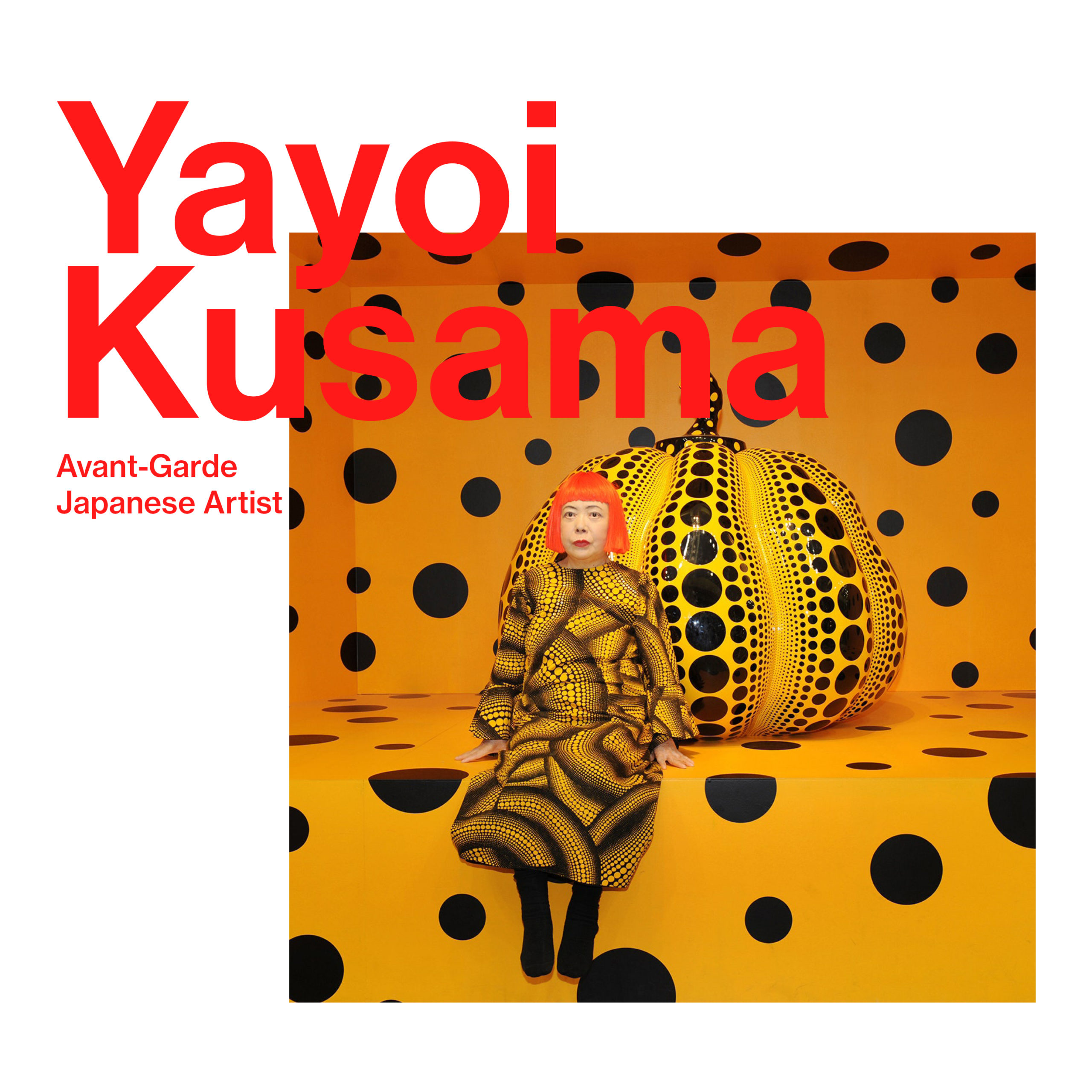
Avant-garde Japanese artist Yayoi Kusama was an influential figure in the postwar New York art scene, staging provocative happenings and exhibiting works such as her “Infinity Nets,” hallucinatory paintings of loops and dots (and physical representations of the idea of infinity). Narcissus Garden, an installation of hundreds of mirrored balls, earned Kusama notoriety at the 1966 Venice Biennale, where she attempted to sell the individual spheres to passersby. Kusama counted Donald Judd and Eva Hesse among her close friends, and is often considered an influence on Andy Warhol and a precursor to Pop art. Since her return to Japan in the 1970s, Kusama’s work has continued to appeal to the imagination and the senses, including dizzying walk-in installations, public sculptures, and the “Dots Obsessions” paintings.
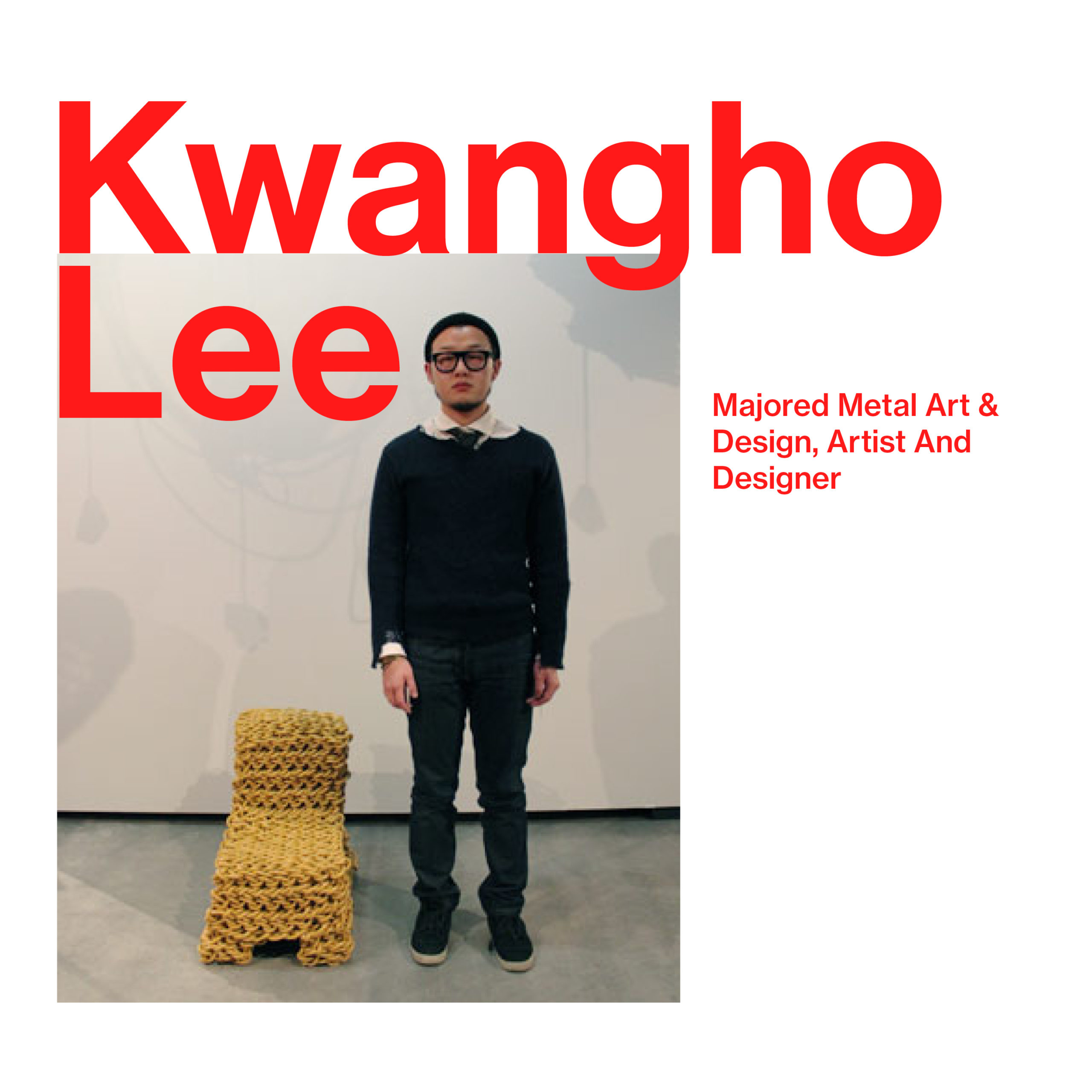
Kwangho Lee was born in 1981 and grew up in a small city next to Seoul, Korea. He completed his studies at Hongik University in Seoul, majoring Metal Art & Design, and graduated in February 2007. He currently lives and works in Seoul. This year marks his 10th year since the start of his career as a designer. Making things by hand was a great joy as a child, reminding his grandfather who, a farmer himself, constantly hand-made daily household goods from natural materials found nearby. Kwangho Lee appreciated the way he looked at everyday objects and thus began to approach things in similar ways; to give new meaning and function to the most ordinary. Today, as he continuously presents new series of works, he develops his practice by discovering moments of materials joining another. Until now he made works on marble and marble, copper and enamel, steel and steel and tries to describe in his works the instant moment of union.
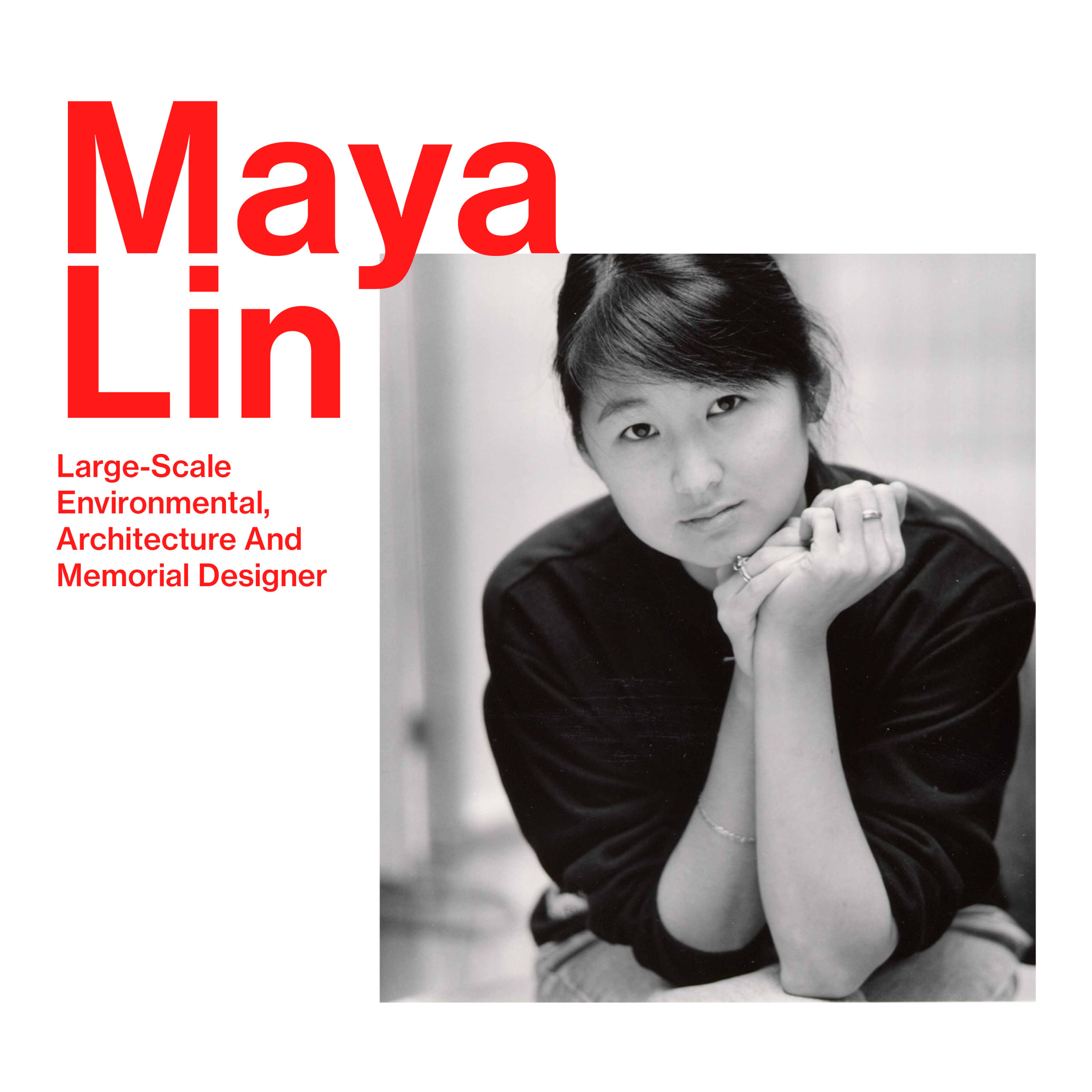
Maya Lin is known for her large-scale environmental artworks, her architectural works and her memorial designs. Her unique multi-disciplinary career has ‘resisted categories, boundaries and borders’ (Michael Brenson). In her book Boundaries, she writes ‘I see myself existing between boundaries, a place where opposites meet; science and art, art and architecture, East and West. My work originates from a simple desire to make people aware of their surroundings.’
Nature and the environment have long been central concerns for Lin who attended Yale University where she earned a BA in 1981 and a Master of Architecture degree in 1986. Lin was thrust into the spotlight when, as a senior at Yale, she submitted the winning design in a national competition for the Vietnam Veterans Memorial to be built in Washington, D.C. She has gone on to a remarkable career in both art and architecture, whilst still being committed to memory works that focus on some of the critical historical issues of our time.
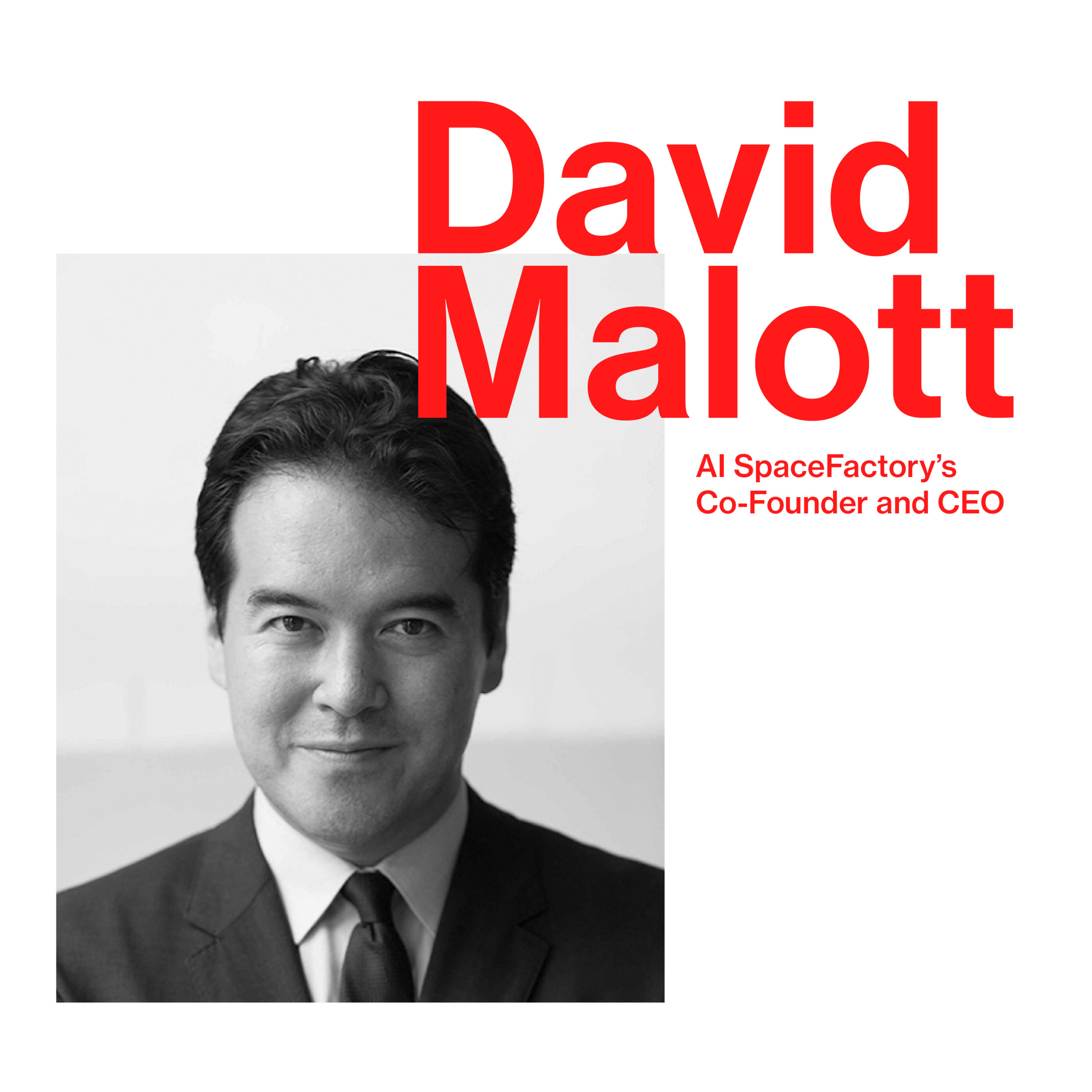
David is AI SpaceFactory’s Co-Founder and CEO. He founded SpaceFactory to achieve his long-held vision of making life multi-planetary and transforming the way we build and live on this Planet.
Under David’s leadership, AI SpaceFactory won the NASA Centennial Challenge for the design and prototyping of our Mars habitat MARSHA. David spearheads the company’s parallel work on Earth and in Space, applying SpaceFactory’s R&D initiatives in Space towards scalable, sustainable solutions for the global construction industry.
Before co-founding AI SpaceFactory, David spent 20 years as a leader in the building industry, through which he worked with the world’s top construction companies to build some of the most complex projects, including three of the world’s tallest towers.

Taniya Nayak is one of the nation’s foremost interior designers. She became a household name as a design expert member on HGTV and Food Network. Taniya owns a successful, Boston-based interior design firm, Taniya Nayak Design, Inc. where she adds a fresh, clean look to both commercial and residential spaces. Known for her sunny smile and sharp eye, Taniya Nayak’s approachable take on interior design has won over everyone from rock stars to first time homebuyers. Taniya’s knack for bringing rich textures and unexpected finishes together with practical, real-life functionality has made her a go-to expert for design programs on major networks including ABC, HGTV and Food Network. In 2005, Taniya started her own design firm, Taniya Nayak Design, Inc. Having designed for a wide range of spaces and budgets, she focuses on creating inspired commercial and residential spaces with both broad appeal and personal connection. Taniya’s design firm has developed an impressive range of clientele from restaurants to condo developments to high-end residential…Born in India and raised in Boston, Taniya’s design style is strongly influenced by her creative family, especially her father, a talented architect who just received his Fellowship from AIA in 2017.

Known for her experimental art, music, filmmaking, and feminism, as well as for her marriage to John Lennon, Yoko Ono was a major figure in the 1960s New York underground art scene, and she continues to produce work and make headlines today. Of several iconic conceptual and performance art pieces that Ono produced, the most famous is Cut Piece (1964), first performed in Tokyo, in which she kneeled on the floor of a stage while members of the audience gradually cut off her clothes. In the ’60s and ’70s Ono was associated with the Fluxus movement—a loose group of avant-garde Dada-inspired artists—and produced printed matter, such as a book titled Grapefruit (1964) containing instructions for musical and artistic pieces. Other works include Smoke Painting (1961), a canvas that viewers were invited to burn. John Cage was a major influence and collaborator for Ono, as was the godfather of Fluxus, George Maciunas.
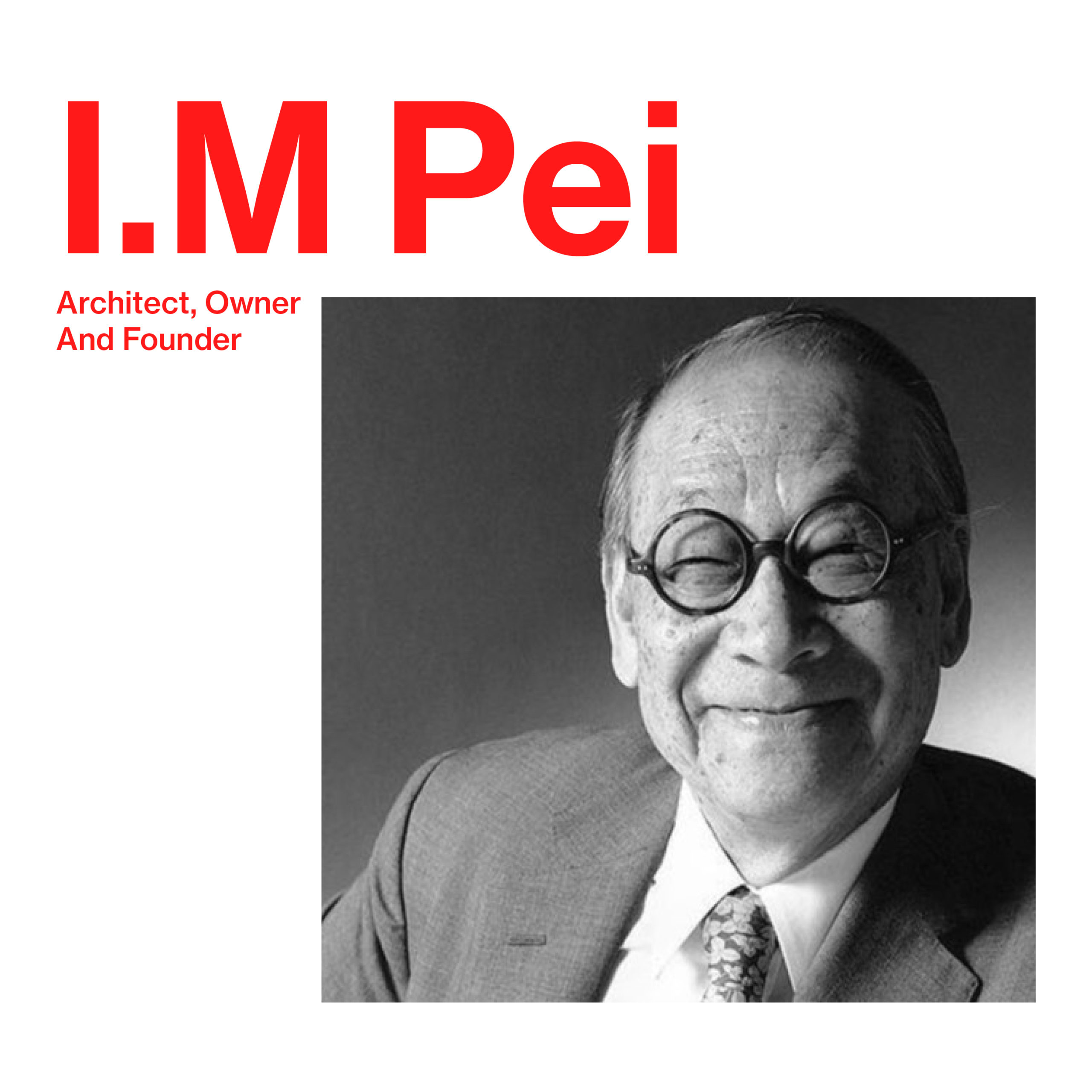
Born in Suzhou, China, I.M. Pei grew up in Hong Kong and Shanghai before deciding to move to the United States to study architecture. Though he was uninspired by the Beaux-Arts traditions at both the University of Pennsylvania and MIT, a professor convinced him to persevere. He received his Bachelor’s degree in 1940, when the second Sino-Japanese War forced him to abandon his plans to return to his home country – in the end, a fortuitous event for the young architect, as it allowed him to discover the Graduate School of Design at Harvard, where Pei worked with Walter Gropius and Marcel Breuer.
Pei founded his own practice in 1955, then known as I.M. Pei & Associates (but later changing its name to Pei & Partners in 1966 and finally to Pei Cobb Freed & Partners in 1989). In its six-decade history, the firm’s most well-known work is likely his crystalline extension to the Louvre in Paris; other highly influential works include the Bank of China Tower in Hong Kong, the East Building of the National Gallery of Art in Washington DC and the JFK Presidential Library in Boston.
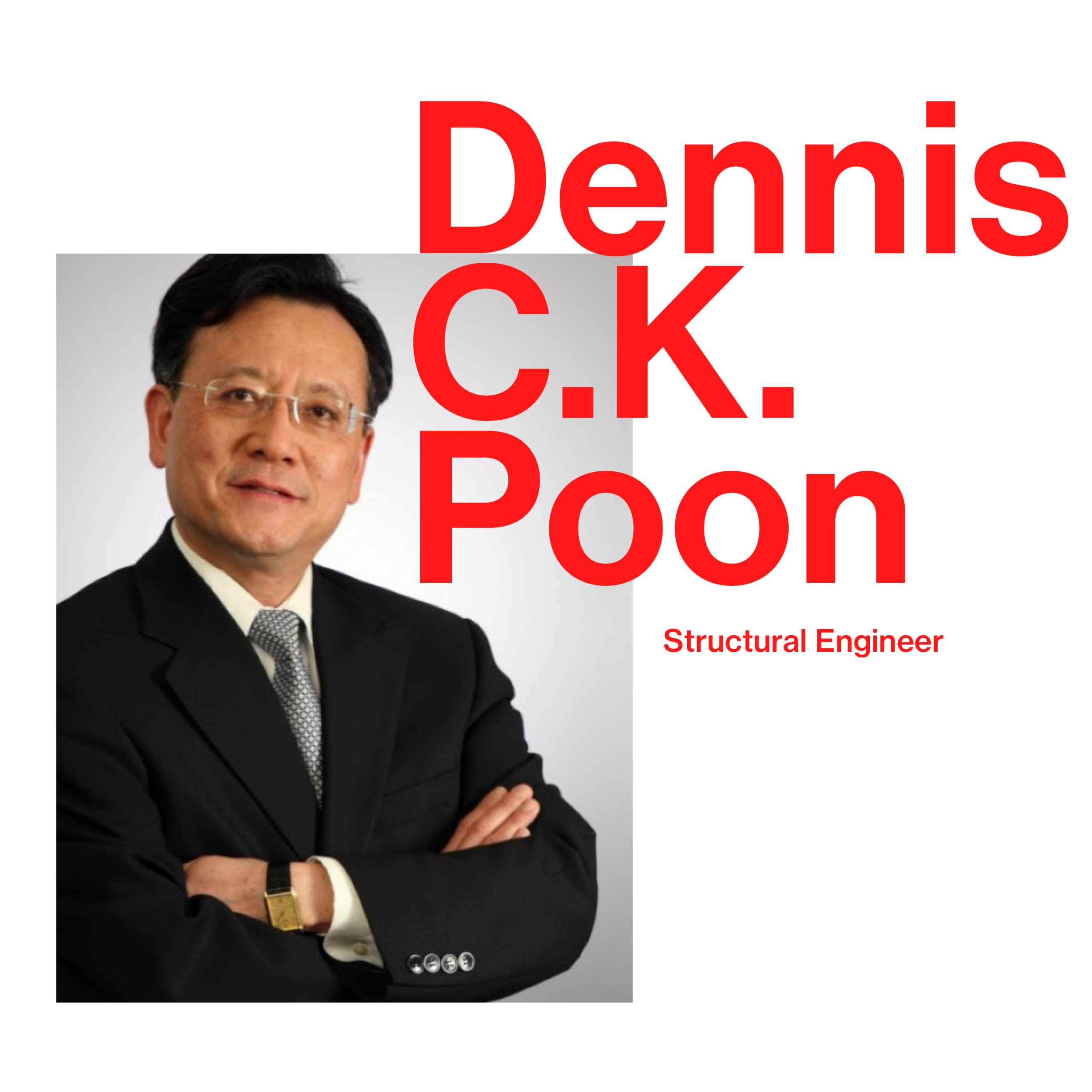
Mr. Poon has more than 30 years experience in the structural engineering of a wide variety of building types, such as super high-rise commercial and mixed-use buildings, health care facilities, airports, and long-span sports and entertainment arenas, in both steel and concrete. He has expertise in the application of state-of-the-art engineering technologies for building analysis, design and construction, including project delivery strategies. Mr. Poon also has extensive experience in seismic design, structural investigations and optimization of structural systems. He has played a leading role in the structural engineering team for the design of the 508m tall Taipei 101 tower in Taiwan. Currently, Mr. Poon is the Principal-in-Charge for the structural design of the 632m tall Shanghai Tower in China, the 601m tall 151 Incheon Twin Tower in Korea, and the 660m tall Ping An Tower in Shenzhen, China.

Jenny Wu received her Bachelor of Arts from Columbia University and Master of Architecture from Harvard Graduate School of Design. Currently, Jenny is a member of the design faculty at the Southern California Institute of Architecture (SCI_Arc) and Columbia GSAPP. She has previously taught at institutions such as Syracuse University and Rensselaer Polytechnic Institute. In addition to her architectural practice, she also founded LACE by Jenny Wu, a line of 3D printed jewelry, in 2014. The pieces have been widely featured in publications, such as Forbes, People, and Elle Magazine. Most recently, Jenny was named one of four design visionaries by Porsche and Dwell Magazine in their ‘Powered by Design’ documentaries, showcasing her pioneering work in 3D printing.
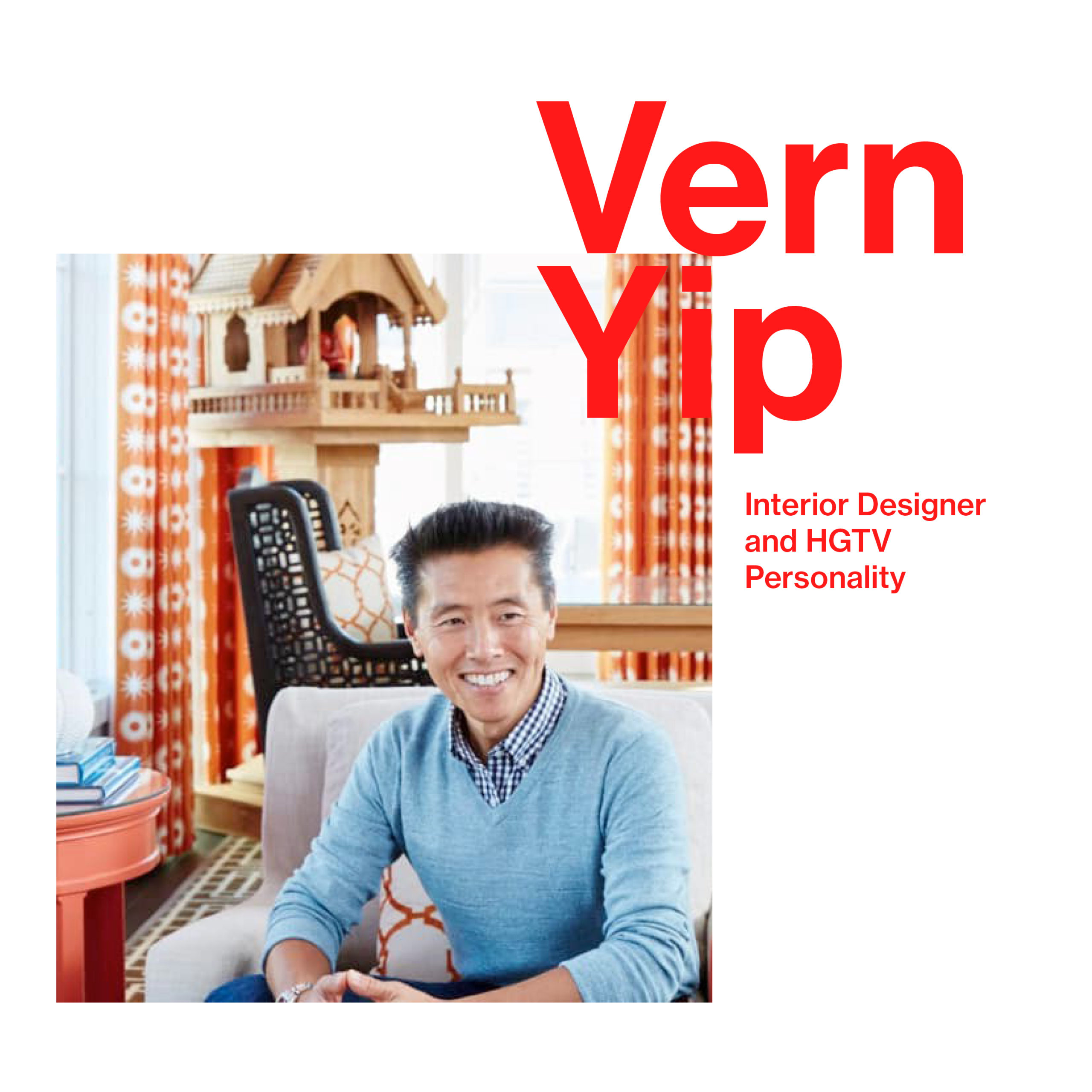
Inspired by his world travels and background in architecture…Vern Yip’s global aesthetic, paired with his precise and clean lines, has set him apart as a leading trendsetter. The environments he creates are always warm, timeless, and effortlessly livable.
Interior designer and HGTV personality Vern Yip’s “extraordinary technique, dynamic personality, and sophisticated style have made him a nationally acclaimed interior designer, columnist, and TV superstar.
It all began with his Atlanta design firm, Vern Yip Designs, where he still works with clients from all over the world till this day. Vern’s interior design work has been award-winning, including the prestigious 2000 Southeast Designer of the Year, and he has been prominently featured in countless interior design and media publications.

